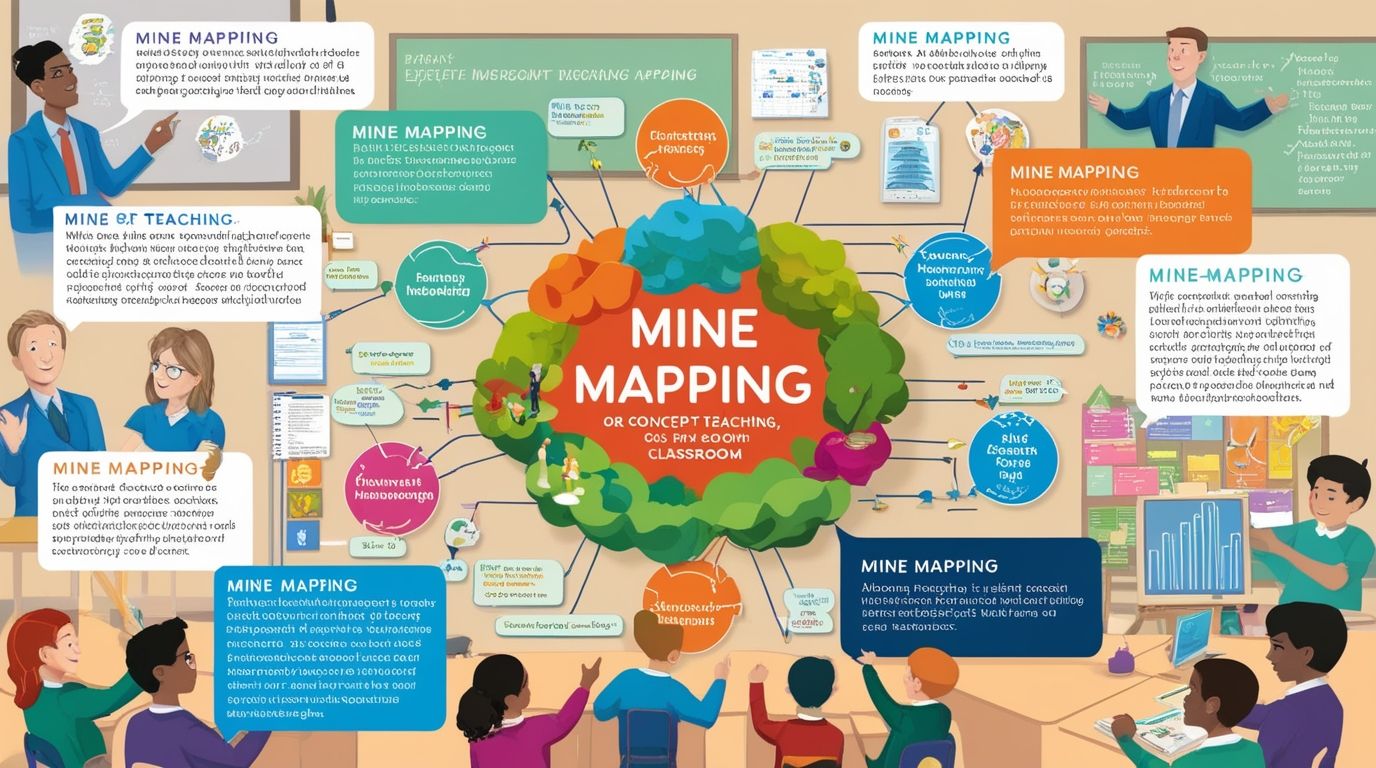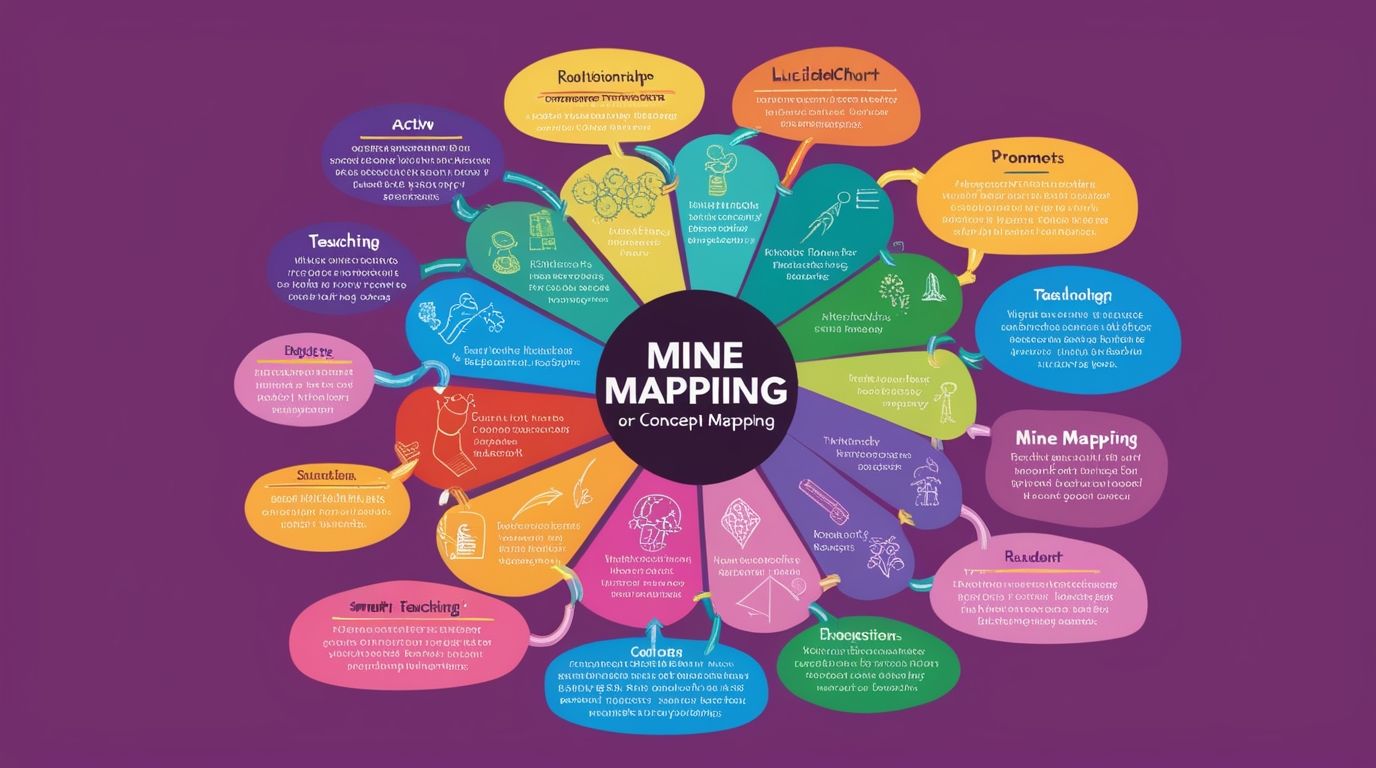Introduction
Mine Mapping for Smart Teaching in the Classroom, In the rapidly evolving educational landscape, technology has become an essential tool for enhancing learning experiences and improving student outcomes. Among the many emerging technologies in education, mine mapping stands out as a particularly innovative method. Also known as concept mapping, mine mapping involves the visual representation of knowledge and concepts, allowing learners to explore relationships between ideas, synthesize information, and deepen their understanding. This technique, when combined with smart teaching tools in the classroom, transforms how students engage with content, fostering collaboration, critical thinking, and personalized learning.
What is Mine Mapping?
Mine mapping, or concept mapping, is a graphical tool that organizes and represents knowledge visually. In a mine map, key concepts are enclosed within shapes (usually circles or boxes) and connected by lines that show the relationships between them. This structure encourages a hierarchical organization of information, where more general concepts branch out into more specific ones.
The visual nature of mine maps makes them a powerful tool for several reasons:
- They help students visualize relationships between ideas.
- They promote deeper learning by encouraging active engagement with content.
- They support retention by organizing information logically and memorably.
Benefits of Mine Mapping in Education
The integration of mine mapping into smart teaching frameworks can significantly enhance learning experiences. Here are some key benefits:
1. Promotes Active Learning
Mine mapping encourages students to actively participate in the learning process. Instead of passively receiving information, students are required to interact with the material, think critically about the relationships between different concepts, and visualize those relationships. This active engagement fosters a deeper understanding of the content.
2. Enhances Critical Thinking and Problem-Solving
When students create mine maps, they are not only memorizing information but also thinking critically about how concepts relate to one another. This process promotes higher-order thinking skills, such as analysis, synthesis, and evaluation. In particular, when students are asked to justify the connections they make in a mine map, they are required to think deeply about the material, which enhances their problem-solving abilities.
3. Supports Personalized Learning
One of the key strengths of mine mapping is its adaptability to different learners’ needs. Students can create mine maps that reflect their personal understanding of the material, allowing for a more personalized learning experience. Additionally, teachers can use mine maps to tailor lessons to individual students’ needs, strengths, and areas for improvement.
4. Encourages Collaboration
Mine mapping can be a collaborative activity, allowing students to work together to construct a shared understanding of a topic. This collaborative aspect not only enhances communication and teamwork skills but also allows students to learn from one another. Group mine mapping activities can be particularly effective for promoting discussion, debate, and peer-to-peer learning.
5. Improves Retention and Recall
Research has shown that information organized visually is more likely to be remembered than information presented in a linear or textual format. Mine maps leverage this principle by organizing information in a way that makes it easy to understand, remember, and recall. The visual connections between concepts help students retain information and retrieve it more effectively during exams or discussions.
Smart Teaching Tools for Mine Mapping
Smart classrooms leverage technology to create more interactive, engaging, and personalized learning experiences. When mine mapping is combined with smart teaching tools, the results can be transformative. Several digital tools and platforms enable educators and students to create mine maps quickly and efficiently. These tools can also enhance the traditional mine mapping process by offering features such as real-time collaboration, multimedia integration, and automatic feedback.
1. MindMeister
MindMeister is a popular online mind-mapping tool that allows users to create, edit, and share mine maps in real time. It offers a range of features that make it ideal for classroom use, including:
- Collaborative features that allow students to work together on the same mine map, regardless of their physical location.
- Multimedia integration, enabling users to add images, links, and videos to their mine maps, making the learning experience more dynamic and engaging.
- Customizable templates that make it easy to get started with mine mapping, even for beginners.
2. Coggle
Coggle is another user-friendly mine-mapping tool that focuses on simplicity and collaboration. It allows students and teachers to create and share mine maps with ease. Some key features include:
- Real-time collaboration, allowing multiple users to work on a map simultaneously.
- Export options for saving mine maps in various formats, such as PDF or image files.
- Color-coded branches that help users differentiate between concepts and ideas visually.
3. Lucidchart
Lucidchart is a powerful diagramming tool that includes mine-mapping functionality. It is particularly well-suited for teachers who want to create complex and detailed mine maps. Features include:
- Integration with Google Drive, allowing students to easily share their mine maps with classmates or teachers.
- Drag-and-drop interface, making it easy to add and organize concepts on a mine map.
- Collaboration features that enable students to work together on group projects and assignments.
4. XMind
XMind is a professional mind-mapping tool that offers a range of advanced features for creating detailed and visually appealing mine maps. It includes:
- Presentation mode, which allows users to present their mine maps in a dynamic and interactive way.
- Brainstorming mode, which encourages creativity and innovation during the mine-mapping process.
- Gantt chart functionality, making it useful for project-based learning and planning.

Integrating Mine Mapping into the Curriculum
For mine mapping to be effective in the classroom, it must be integrated thoughtfully into the curriculum. Here are some strategies for incorporating mine mapping into teaching and learning:
1. Pre-Lesson Conceptualization
Teachers can introduce mine maps at the beginning of a lesson to help students visualize the structure of the upcoming content. By presenting a mine map that outlines the key concepts and their relationships, teachers can provide students with a framework for understanding the material.
2. During-Lesson Engagement
During the lesson, students can create their own mine maps as they learn new concepts. This allows them to actively engage with the content and organize their thoughts as they go. Teachers can also use digital mine-mapping tools to facilitate group activities, where students collaborate to build a mine map in real time.
3. Post-Lesson Review
After a lesson, mine maps can be used as a review tool. Students can create summary mine maps to consolidate their learning and ensure they have understood the material. Teachers can also use mine maps for assessment purposes, asking students to create a mine map that demonstrates their understanding of a particular topic.
4. Assessment and Feedback
Mine maps can serve as an effective form of formative assessment, allowing teachers to gauge students’ understanding of a topic in real time. By reviewing students’ mine maps, teachers can identify misconceptions or gaps in knowledge and provide targeted feedback. Additionally, digital mine-mapping tools often include features that allow teachers to give feedback directly within the map, making the assessment process more efficient.
Challenges and Considerations
While mine mapping offers many benefits, there are also challenges and considerations to keep in mind:
- Technology Access: Not all students may have access to the necessary technology, particularly in under-resourced schools. Ensuring equitable access to mine-mapping tools is essential for its successful implementation.
- Teacher Training: Teachers need to be familiar with both mine mapping and the digital tools available to support it. Professional development opportunities are crucial for helping teachers integrate mine mapping into their classrooms effectively.
- Overuse of Technology: While technology can enhance mine mapping, it is important not to rely too heavily on digital tools at the expense of other teaching methods. A balanced approach that incorporates both traditional and digital techniques is key.
Conclusion
Mine mapping, when integrated with smart teaching tools, offers a powerful and flexible approach to learning. By promoting active engagement, critical thinking, collaboration, and personalized learning, mine mapping transforms the classroom experience. As technology continues to evolve, educators must explore innovative methods like mine mapping to prepare students for the challenges of the 21st century. In a smart classroom, mine mapping not only enhances learning outcomes but also fosters a deeper and more meaningful connection to the material.
References
- Novak, J.D., & Cañas, A.J. (2008). The Theory Underlying Concept Maps and How to Construct Them. Institute for Human and Machine Cognition.
- Buzan, T. (2018). The Mind Map Book: Unlock your Creativity, Boost Your Memory, Change Your Life. BBC Active.
- Fisher, R. (2005). Teaching Children to Think. Nelson Thornes.
- Anderson, L.W., & Krathwohl, D.R. (2001). A Taxonomy for Learning, Teaching, and Assessing: A Revision of Bloom’s Taxonomy of Educational Objectives. Longman.

5 thoughts on “Mine Mapping for Smart Teaching in the Classroom”
Comments are closed.